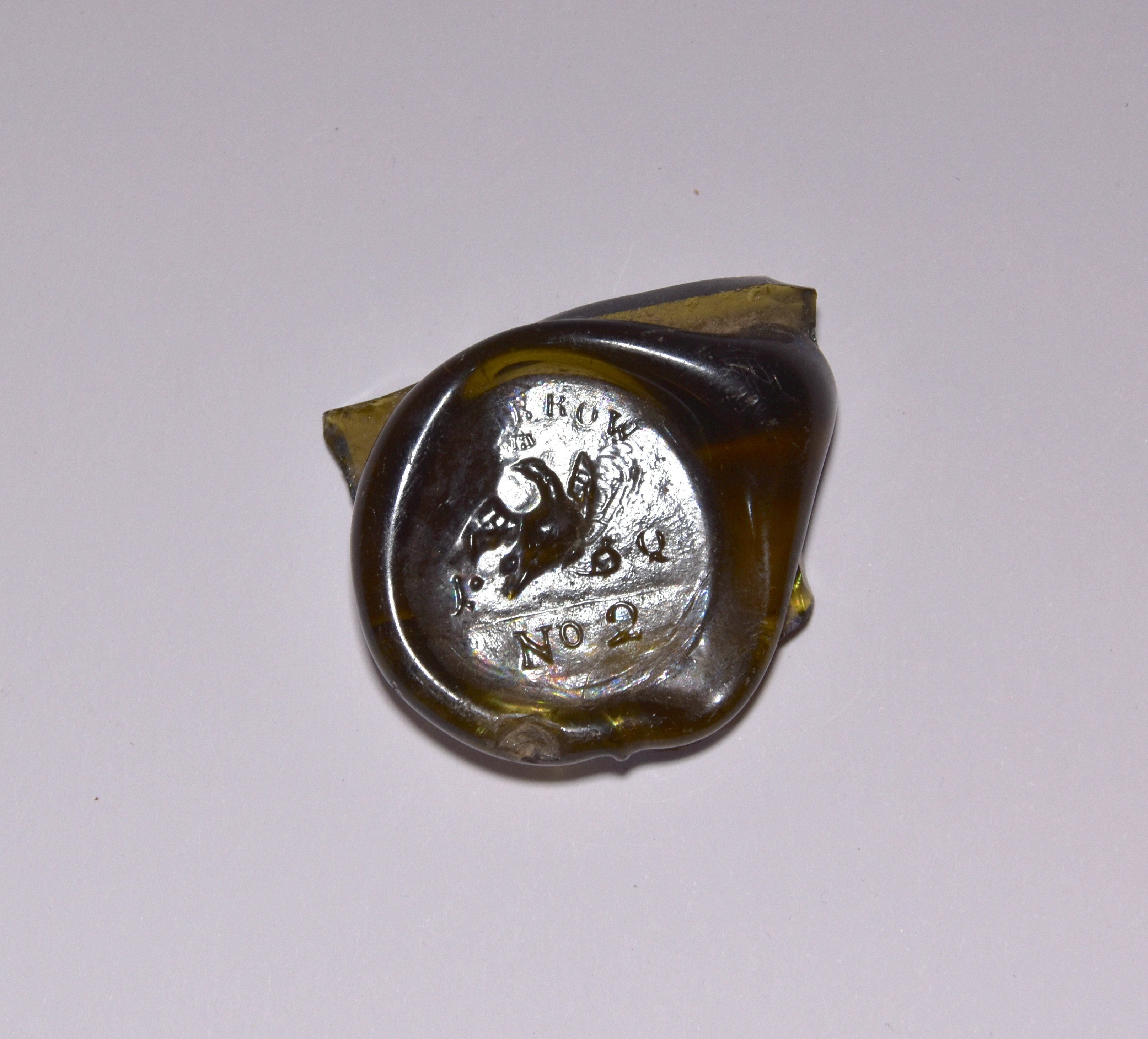Scherbe mit ovaler Marke aus hellgrünem Glas, gestempelt "GLOBBOW / 1 [Adler] Q / NO: 2", korrodiert.
Dieses Fragment einer preußischen Quartbouteille aus der Globsower Glashütte – trotz falscher Schreibweise – stammt vom Standort Neuglobsow. Im Standardwerk zum brandenburgischen Glasgewerbe ist die Stempelung publiziert (Friese, Glashütten in Brandenburg, 1992, Serie 33.2, S. 50). Die Nummer "2" identifizierte den für die korrekte Füllmenge der von ihm erzeugten Flasche verantwortlichen Glasmacher. Die Scherbe wurde auf dem Nachbargrundstück gefunden, ebenfalls ein historisches Glasmacherhaus, und dem Museum übergeben. Sehr wahrscheinlich handelt es sich dabei um Glasbruch, der zum Wiedereinschmelzen vorgesehen war. [Verena Wasmuth]
en

